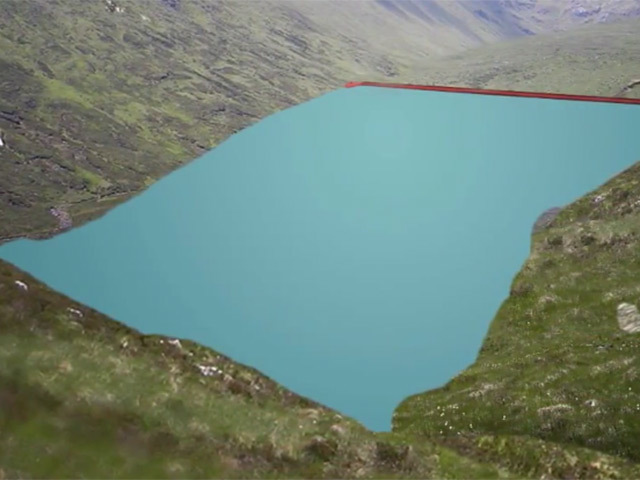
An energy firm has won a £100million plus compensation claim on appeal following a tunnel collapse at a new Highland hydro-electric scheme.
SSE Generation took legal action against contractor Hochtief who designed and built the underground passage at the Glendoe site near Fort Augustus between 2006 and 2008.
In 2016 a commercial judge at the Court of Session in Edinburgh ruled against SSE in the substantial part of their claim.
Lord Woolman said he was satisfied that Hochtief did exercise reasonable skill and care in the project and that the collapse was an “employer’s risk event”.
But following an appeal by SSE to three judges they have now ruled in favour of the firm by two to one in their legal challenge.
The senior judge, the Lord President Lord Carloway, said the court ought to refuse the reclaiming motion brought by SSE and adhere to the ruling of Lord Woolman.
But Lord Menzies and Lord Glennie said the appeal should be allowed and that the firm should be awarded more than pounds 107,000,000 over the cost of the recovery project along with a further pounds 1 million damages.
Under the construction project a head race tunnel (HRT) ran more than six kilometres from a reservoir at Glen Tarff to the turbine before a shorter tunnel then discharged water into Loch Ness.
The scheme was officially opened by the Queen on June 29 in 2009 when the turbine initially failed to start.
The following day engineers heard thumping noises and it was later found there had been a progressive collapse of the tunnel.
Water was taken out of the head race tunnel and an inspection carried out. Rock falls could be heard and minor collapses had occurred but a complete blockage over 70 metres in length was discovered.
Both parties accepted that the appropriate remedy was to construct a bypass tunnel but Hochtief said in a letter that they did not consider they had any liability or obligation to carry out the remedial work at their own expense.
Another contractor was brought in and works were completed in August 2012 when the scheme began generating the required amount of energy, producing pounds 20 million in annual revenue.
Lord Woolman found that the tunnel collapsed “because there was not enough support: poor rock conditions coincided with insufficient shotcrete (sprayed concrete) and rockbolts”.
Lord Glennie said in his appeal judgement: “I have come to the conclusion that the pursuers (SSE) have made good their case that the cause of the collapse was a defect which existed at take over, in that a part of the works, viz the HRT, was not in accordance with the works information, viz the requirement for a tunnel with a design life of 75 years.”
He said the defect was not a design one but rather in the implementation of the design and added: “It was that failure in implementation of the design which resulted in the fact that the tunnel on hand over did not have a design life of 75 years.”
Lord Glennie said: “The absence of shotcreting or other protection in areas of erodible rock meant that that part of the works was not in accordance with the contractor’s design accepted by the project manager.”
Lord Menzies said the HRT as implemented was a part of the works designed by the contractor which was not in accordance with its design which had been accepted by the project manager.
He said: “The cause of the collapse was the coincidence of poor rock conditions with insufficient shotcrete and rock bolts. I consider that the pursuers’ pleadings were sufficient to cover this.”
Lord Carloway said it was not possible to conclude that the commercial judge had erred in finding that the contractor did exercise reasonable skill and care.